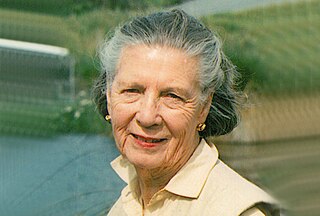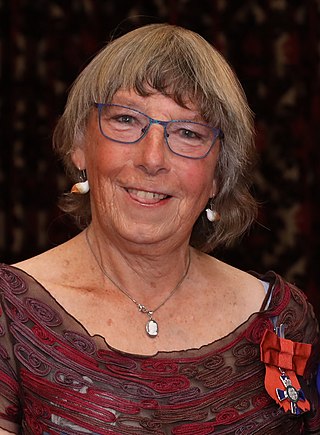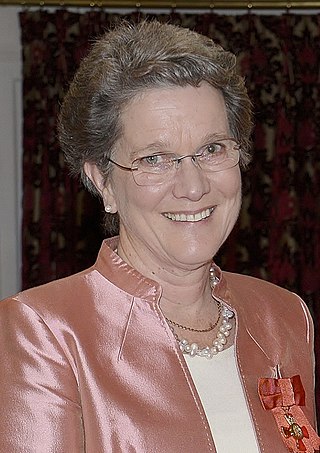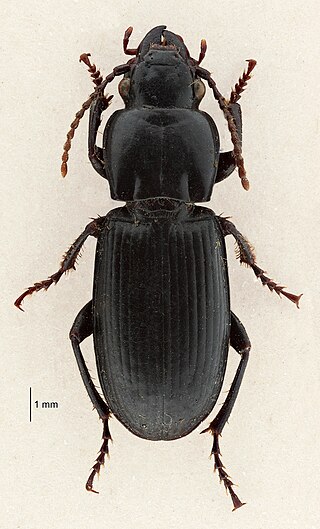
Margaret Elizabeth Austin is a former New Zealand politician. She was an MP from 1984 to 1996, representing first the Labour Party and then briefly United New Zealand.

The Styx River runs along the northern boundary of Christchurch, New Zealand before flowing into the Waimakariri River close to its mouth via Brooklands Lagoon.

Water pollution in Canterbury, New Zealand has become a major environmental issue, largely due to pollution from agricultural sources, but also industrial and urban sources.

Dame Janice Claire Wright was New Zealand's third Parliamentary Commissioner for the Environment. She was sworn in as Parliamentary Commissioner for the Environment for a five-year term on 5 March 2007, and was reappointed for a further five years in 2012.

Mojo Celeste Mathers is a New Zealand politician and a former Member of Parliament (MP) for the Green Party. She became known through her involvement with the Malvern Hills Protection Society and helped prevent the Central Plains Water Trust's proposal to build a large irrigation dam in Coalgate. She was a senior policy advisor to the Green Party between 2006 and 2011. Mathers was elected to the 50th term of Parliament in 2011, becoming the country's first deaf Member of Parliament.

Lancelot William McCaskill was a New Zealand agricultural instructor, lecturer, conservationist and writer. Born in Winchester, South Canterbury, New Zealand, he became aware of soil erosion problems in 1929 through his work towards his master's thesis Fertilizers in New Zealand, 1867–1929. He argued in favour of land management and conservation over downstream engineering solutions. His long career of public advocacy for soil conservation made him a pioneer of environmentalism, as it is understood today.

Diana Isaac, Lady Isaac was a New Zealand conservationist, businesswoman, philanthropist and arts patron who supported a wide range of projects within Canterbury. She was best known for co-founding and running Isaac Construction with her husband Sir Neil Isaac.

Kerry-Jayne Wilson was a New Zealand biologist and lecturer in ecology at Lincoln University in the Faculty of Agriculture and Life Sciences.

Ann Brower is an environmental geographer from New Zealand. A survivor of the 2011 Christchurch earthquake, she successfully lobbied for a law change to the Building Act, which was passed in 2016 as the Brower Amendment. Brower was promoted to full professor at the University of Canterbury in December 2021. In 2022 she won the Charles Fleming Award for Environmental Achievement.

Alison Marion Cree is a New Zealand herpetologist. She is currently a professor at the University of Otago.

Brian Peter John Molloy was a New Zealand plant ecologist, conservationist, and rugby union player.

Dame Aroha Hōhipera Reriti-Crofts was a New Zealand community worker who was national president of the Māori Women’s Welfare League.

Jacky Bowring is a New Zealand landscape architecture academic specialising in memories and memorials. She is currently a full professor at Lincoln University. In 2024 Bowring was elected a Companion of the Royal Society Te Apārangi.

Nicola Mary Shadbolt is a New Zealand farmer, academic and company director. She is currently a full professor at the Massey University and Chair of Plant & Food Research.

Holcaspis brevicula, the Eyrewell ground beetle, is a species of carabid beetle native to New Zealand, one of a number of small black flightless beetles in the genus Holcaspis that inhabit the dry eastern lowlands of the South Island. H. brevicula is very rare—only ten specimens have ever been collected—and critically endangered: the species was found only in Eyrewell Forest, a single plantation of exotic pine trees currently being converted into dairy farms.
Megan Mary Wraight was a New Zealand landscape architect who had considerable influence on the design of public spaces. She was the founding principal of Wraight + Associates Limited, which has completed a wide variety of large-scale urban projects throughout New Zealand, including waterfront redevelopments, educational facilities, transport facilities and urban-renewal projects.

Priscilla M. Wehi is a New Zealand ethnobiologist and conservation biologist. As at July 2021 she is an associate professor at the University of Otago and on the first of that month officially undertook the role of director of Te Pūnaha Matatini, a centre of research excellence in complex systems and data analytics. During the COVID-19 pandemic in New Zealand Te Pūnaha Matatini scientists have developed mathematical models of the spread of the virus across the country that influence the New Zealand government's response to the outbreak. In 2021 Wehi was awarded the Hill Tinsley Medal.

Diane Helen Menzies is a New Zealand landscape architect. She is a former Environment Court commissioner, and served as president of the International Federation of Landscape Architects from 2006 to 2010. In 2008, she was invested as an Officer of the New Zealand Order of Merit, for services to the environment.
The New Zealand Institute of Landscape Architects Tuia Pito Ora (NZILA) is the professional body for landscape architects in NZ. The institute was founded in 1972, and provides registration to individuals and accreditation to education providers, operates branches around the country, and offers a number of awards, an annual conference and ongoing professional development.

Hafsa Ahmed is a New Zealand academic, and is a lecturer in the Department of Global Value Chains and Trade at Lincoln University. In 2023, Ahmed was appointed a Member of the Order of New Zealand for services to ethnic communities and women.



















